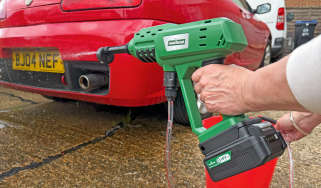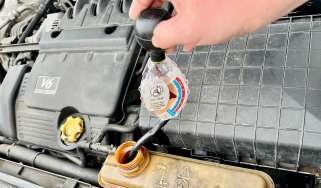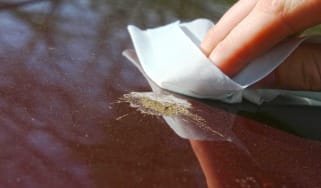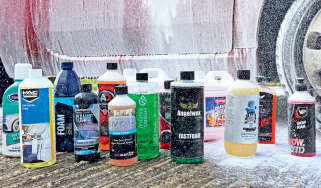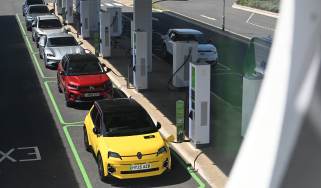Car underseal rust protection: what is it and is it worth getting for your car?
Here are our top tips and things to consider when it comes to protecting your car from rust with a car underseal
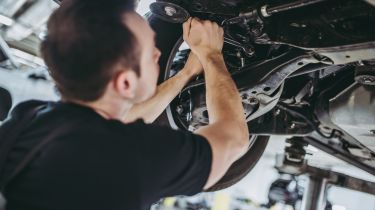
Protecting a new, used or classic car from rust and corrosion with a rust-proofing car underseal is something many owners will have considered.
Rust and corrosion is a serious problem for cars of all ages, with vulnerable areas like the chassis and wheel arches being constantly exposed to dirt, salt and moisture. However, you can protect these parts by applying a car underseal or cavity wax. This page outlines the different types of underseals available, how to apply them and the likely costs involved.
Look in any scrapyard and you will see a surprising number of relatively modern vehicles which have succumbed to the MoT tester’s screwdriver. Water and moisture can easily get behind plastic trim and bumpers, with rust eating away at the bodywork and chassis long before it’s noticed by a mechanic or the owner, and can easily become uneconomical to repair if left untreated.
From small city cars to high-end luxury sports cars, applying a car underseal is a good way of preventing and delaying rust and corrosion from appearing. It should help keep your car roadworthy for longer and is more cost effective than welding repairs further down the line.
Imported cars, especially those from Japan, may not be extensively rust proofed, as the climate is much milder and the roads are not treated with corrosive salt in the wintertime so owners of these vehicles need to take particular care. Those who live by the sea are also up against harsher, saltier conditions and extra rust proofing can be advisable.
What is a car underseal?
A car underseal is a durable, rust-proofing agent in the form of a paint or cavity wax that is designed to repel water, moisture and dirt from exposed areas under a car which are vulnerable to the harshest road conditions. You would normally apply a car underseal to areas like the chassis or wheel arches.
Types of car underseal and waxes
There are several different types of cavity waxes and underseals, each having different costs and benefits.
Bitumen
The cheapest form of underseal is simply a type of bitumen, the same material which is used to hold roads together.
Bitumen-based underseals cost around £10 for a small can and are effective at protecting ‘banger’ type cars which you don’t expect to last long term. It doesn’t look pretty though, and make sure you wear gloves and mask off any areas you don’t want to be coated, as it is tricky to remove once applied.
Normally applied thickly, this type of underseal provides decent protection for about a year, but over time this will crack and will allow water, dirt and moisture to meet the metal again, encouraging rust, so regular reapplication is a must.
Wax underseals
Wax-based underseals are generally more expensive than the bitumen-based underseals mentioned above, but have the ability to ‘self-heal’ if hit by road debris, which means the panel is always protected.
After a few years, though, it can wear away, especially if the underside of the car is regularly washed with a pressure washer. In really hot weather it can even melt, leaving some areas with thinner protection.
The best wax underseals will combine corrosion-inhibiting and rust converting chemicals in the coating to prevent further corrosion.
Wax underseals can cost in the region of £50 and above for a five litre tub, but it’s definitely cheaper to apply this regularly than having welding repairs later on.

Is it a good idea to underseal a car?
Undersealing a car is generally a good idea if you want to protect vulnerable areas from water, moisture and dirt.
If you live by the coast, undersealing your car is particularly beneficial as it can help protect exposed metalwork from the humid and salty sea air, which can accelerate rust and corrosion.
If you do decide to rust-proof the chassis or wheelarches of your car with underseal, you’ll need to make sure the wax or paint doesn’t crack over time, as moisture (and then rust) will creep into these cracks and eat away at the metal.
Applying underseal to a car is fairly straightforward and is something which can be done yourself on your driveway at home, which we discuss below.
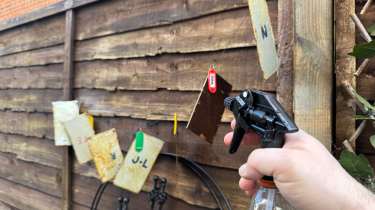
How to apply car underseal
Thankfully, treating a car with an underseal is something which can easily be done on the driveway at home by a keen DIYer. Be warned though, it can be a messy job so wearing eye protection is a must. Below we walk you through the steps of applying a car underseal at home.
Alternatively, if you aren’t able to do it yourself, then some garages, bodyshops or specialists will be able to do it for you, expect it to cost between £350-£500. Be sure to go on recommendations though.
Raise the car up using a ramp or axle stands
To access the underside of the car, you’ll want to use a static ramp or jack the car up and place it on some axle stands.
Do not rely on the jack in the boot of your car or a trolley jack as the car could easily slip off or the jack could fail, which could be catastrophic if this happened while you were working under the car.
Prep and clean the exposed surface
To do the job properly you’ll need to make sure the surface to be painted is clean and that the old, cracked underseal is removed. To completely clean the surface, you may need to gently remove pieces of trim to get a complete and unobstructed view.
Removing old underseal can be done using a wire brush. If there are any rust holes it’s best to get these repaired, as covering it will only make the welding job more difficult (or impossible) later.
Apply the car underseal
Depending on the type of underseal you’ve chosen, you can either use a paintbrush, aerosol or spray gun to apply the seal.
Make sure you mask off areas which shouldn’t be covered, especially the brakes or the exhaust pipe. If you accidentally overspray onto the exhaust, it’s not disastrous as the heat will burn off the underseal but it will smell unpleasant. It’s also worth covering the paint on panels near where you’re applying underseal, as overspray is difficult to remove.
Access to the sills and other enclosed areas can usually be gained by carefully removing a blanking plate or grommets. If there are wheel arch liners or other bits of trim, it is worth dropping them down to access the metal behind. When underneath the car, make sure you spray from different directions to ensure even coverage.
Treating inside box sections like chassis rails and sills is also a good idea, although a different type of chemical can be used for this, or underseal products can be made thinner with a white spirit to inject into inaccessible places.
Reapply any trim pieces
Once your car is treated, you can reapply any trim pieces and can relax knowing you have protection.
Remember to thoroughly check for rust regularly though as treating rot at the earliest opportunity is cheaper in the long run. You can use a rust converter on any areas of surface rust, as well as reapplying the underseal every few years to keep on top of rot.
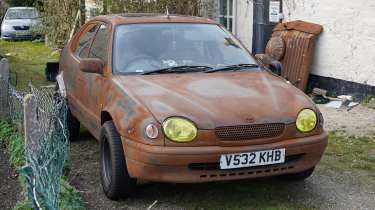
Can I underseal my car if it already has rust?
New car owners will know if their car has received any additional rust protection since leaving the factory, but buyers of secondhand or used cars might not be so lucky.
Thankfully, rust protection can be applied even if your car has sections of surface rust, but you will need to brush away any surface rust with a wire brush and apply a rust converter beforehand. Any rust which has eaten through bodywork or other metal surfaces may require attention from a bodyshop before a sealant can be applied.
Has your car ever succumbed to rust? Let us know in the comments below...
Frequently Asked Questions
Find a car with the experts


